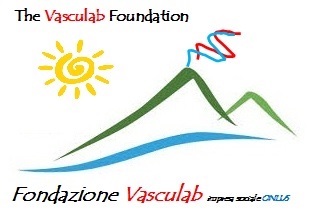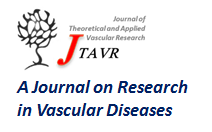DOI: 10.24019/issn.2532-0831
Online ISSN 2532-0831

Journal of Theoretical and Applied Vascular Research
Journal website: http://www.vasculab.eu/jtavr.xml
JTAVR 2017;2(2): 97-105

Experimental validation of the Paraná manoeuvre compared to the squeezing test

S Ermini1, F Passariello2, M Cappelli3, C Franceschi4
2Fondazione Vasculab ONLUS, Napoli, Italy
3Private practice, Firenze, Italy
4Centre Marie Thérèse Hôpital Saint Joseph, Paris, France
accepted Dec 13, 2017
EPub ahead of Print: Dec 30, 2017
Published: Dec 31, 2017
Abstract
Background and aim
The squeezing test (ST) is widely practiced, owing to its simple execution. In 1997, the Paraná (P) manoeuvre was proposed. This manoeuvre consists in a gently pushing-from-the-rear or pulling-from-the-front. Our aim was to compare the hemodynamic effects of ST and P during the muscle systole and diastole.
Method
57 patients underwent a diagnostic Duplex examination. 57 legs were examined, one leg for each patient, exploring just one venous segment for each leg. 37 patients were affected by incompetence of the terminal valve of the saphenous-femoral junction. 20 patients presented just telangiectasiae (C1) and were used to compare the manoeuvres in competent popliteal veins. Measurements were taken on 57 venous segments (20 competent popliteal veins, 13 incompetent saphenous-femoral junctions, 13 incompetent trunks of great saphenous vein and 11 re-entry perforating veins). Comparisons were worked out using a two-tailed paired t-test.
Results
Compared to ST, P moves 68% more blood volume in systole in the competent popliteal vein (p=0.00014***), while the diastolic phase of P is 2.52 times longer in incompetent SFJ (p=0.00003***), 1.83 times longer in the incompetent GSV trunk (p=0.0015**) and 3.27 times longer in the re-entry perforating veins (p=0.07 n.s.). However, this last result, near to significance, needs further investigations. In addition, our data about the systolic acceleration did not show any meaningful result.
Conclusion
P is a better test than ST in the evaluation and quantification of reflux and could be of paramount clinical importance in improving diagnostics in venous diseases, being actually practised since 20 y in many vascular labs. P does not rely on the size of the operator's hand or the size of the patient's calf and investigates a condition which is almost near to the physiological posture balance.
since Dec 30, 2017
 - DOI: 10.24019/jtavr.42 - Corresponding author: Dr. Stefano Ermini, EMail info@veneinforma.com
- DOI: 10.24019/jtavr.42 - Corresponding author: Dr. Stefano Ermini, EMail info@veneinforma.com © 2017 Fondazione Vasculab impresa sociale ONLUS. All rights reserved.
© 2017 Fondazione Vasculab impresa sociale ONLUS. All rights reserved.